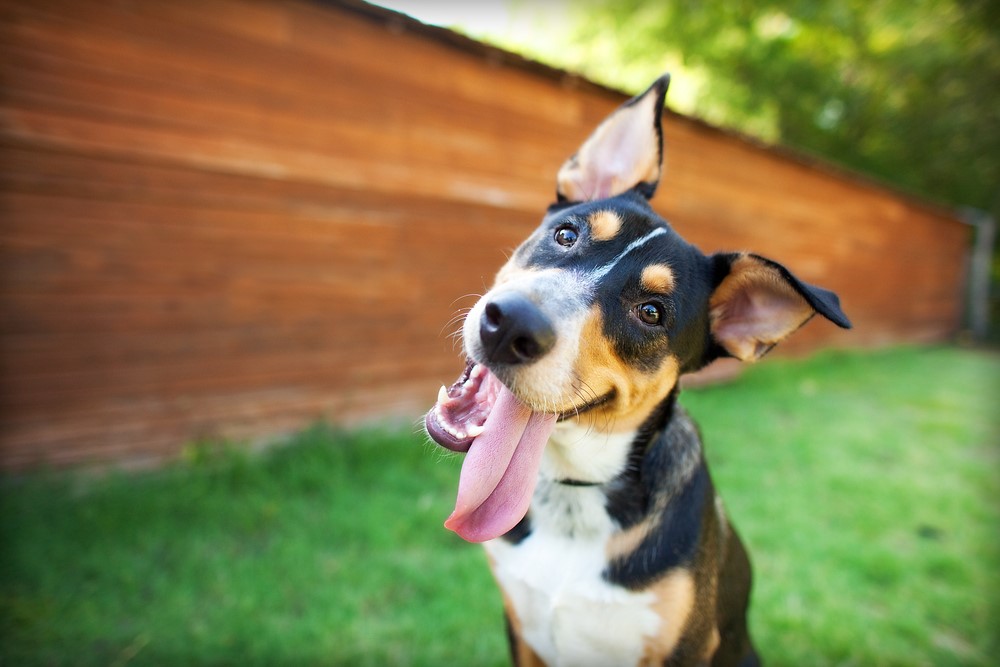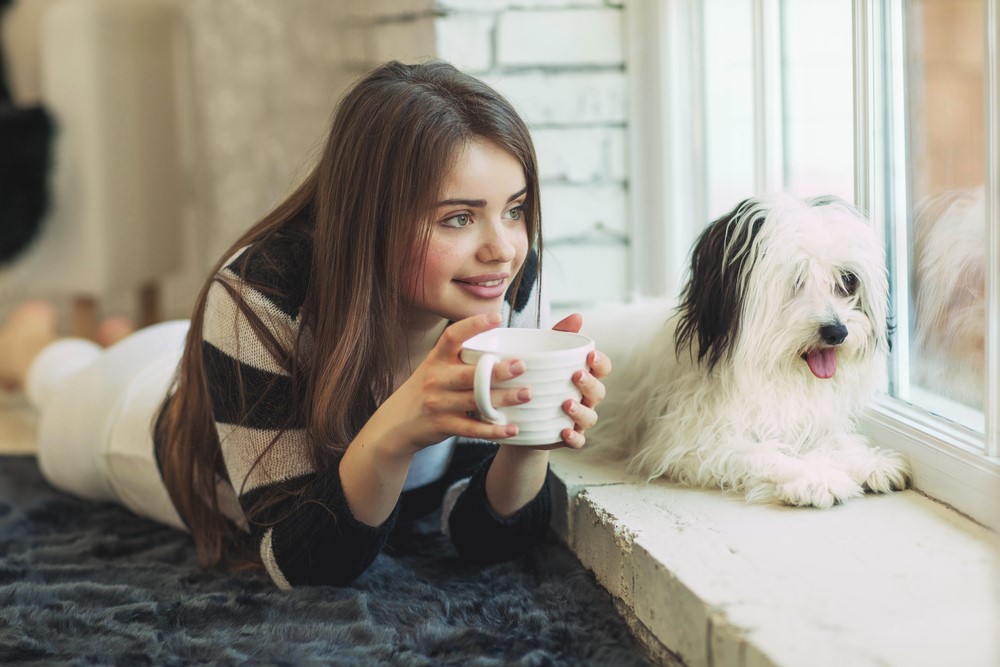Main Index
In Store
Our Web Store
Miniature Schnauzer Picture Gallery
Latest Dog Blogs
- What Are The Basic Commands To Train A Dog?
- PaySafe As The Most Popular Type Of Deposit
- Everything You Need To Know About Pet Sales
- Dogs Contribute To Our Physical And Mental Well Being
- How To Choose Where To Bet On Greyhounds In 2022
- Volunteer With Animals - How To Help Dogs Around The World
- Basic Understanding Of The House Edge
- Why You Should Get A Dog
- Top 20 Popular Dog Names Around The World
- Constipation in Dogs and How to Find Solutions
Key Tips On How To Help Your Dog Transition Into A New Home Better When Moving
- 18/05/2017
Moving can be a stressful enough process for us humans, let alone for their canine friends. Even the most well-trained dogs can exhibit behavioural issues after moving homes due to the disruption. Fortunately, there are a number of things you can do to make the process easier on your furry friend.
Create a dog-friendly space in your new home before you get there.
 Dogs do best when they know exactly what you expect of them. You may not think environmental changes would be this influential, but the truth is that they can be a big deal. Your dog will no longer know where they are allowed to be within the home and which areas are off limits. They will no longer know which door to use to exit and enter the house. These are just some of the factors at play.
Dogs do best when they know exactly what you expect of them. You may not think environmental changes would be this influential, but the truth is that they can be a big deal. Your dog will no longer know where they are allowed to be within the home and which areas are off limits. They will no longer know which door to use to exit and enter the house. These are just some of the factors at play.The best way to combat this is to decide which area of the house is your dog’s new space. If you crate your dog, this is where the crate should be placed. If you confine your dog to a limited space when you leave the house, this is that space. Identify it before you arrive so you do not contribute to their confusion.
You should establish where all of your dog’s new areas will be.
In addition to his crate area or confinement area, you will want to identify the additional areas where your dog will be allowed - and any areas that will be off-limits. These should not change from the moment your dog steps foot in the new house. When selecting permitted areas and restricted areas, help your dog understand where they can go to the bathroom, and how they will access this area, as well as where their food and water is. The less you can change this location, the better.
Do not wash your dog’s bed or other items before moving, and pack his stuff last.
You may think that starting over with all new or freshly washed items would be nice, but this could cause more confusion for your pet. Keeping his old bed and toys, without washing them, will help him to acclimate to the new face faster. It will also help him to identify which areas of the house are for him, and which are not.
To make the transition as seamless as possible, it is also advisable to wait as long as you can before packing up your dog’s things. Make sure that he has access to them for as long as possible. As your former home fills with boxes, this will help to ease the transition out. Likewise, once you get to the new home, unpack them first and place them in their designated areas so that your dog has immediate access.
Once you arrive, let your dog get to know their new bathroom area first.
Your dog’s toileting area is the most important one for him to get familiar with. When you first bring your dog to your new home, stay with him in the toileting area until he does his business and then praise him. If you have a command that encourages him to go to the bathroom, use it. Then, he will know right away where his new bathroom is.
You should still be on the lookout for accidents. It is common for them to occur during the first week or so after a move as your dog adjusts.
Let him get acclimated to the new space before introducing any new people.
 It is important to not introduce too many changes at a time, particularly for more high-strung or skittish dogs. Do your best not to introduce new things beyond the immediate environment. This includes neighbours, neighbours’ pets, and the like.
It is important to not introduce too many changes at a time, particularly for more high-strung or skittish dogs. Do your best not to introduce new things beyond the immediate environment. This includes neighbours, neighbours’ pets, and the like.Maintain your usual exercise and feeding schedule.
This is also not the time to introduce any new routines, games or treats. Keep everything as consistent as you can in the weeks leading up to the move and following. Take your dog for walks or any usual excursions on the same time schedule. Continue to feed and treat at the same times. For instance, if you usually give a pre-bedtime treat or a treat whenever you come home, continue to do these things.
The only caveat to this is that you may find that slightly longer walks help your dog to wind down and get to know your new neighbourhood better.
Keep your dog with you whenever he is not in his dog-friendly space.
As your dog gets used to his new space, he may exhibit some unwanted behaviours such as chewing or digging. To reduce the instances of such behaviours, and to nip them in the bud when they do occur, it is best to keep your canine buddy with you whenever he is not in his crate or other dog-friendly space. You can correct behaviour gently as it arises. If your dog does not seem to be acting out at all, you only need do this for the first few days before proceeding to slowly give him full access to the permitted areas.
Update your dog care list.
Do not forget that you’ll need to order new tags with an updated address and to locate all of the resources you need in your new neighbourhood. Identify who your new vet will be, and look into kennels, daycares and dog walkers if you use them.
With a little bit of extra love and attention - and by maintaining consistency as much as possible - you and your dog will be enjoying your new home in no time.
Alex Brown
 Alex works at a pet facility and volunteers at an animal shelter. He has over 10 years of experience and has started CatLitterExpert to share his knowledge on cats and other animals with the goal of making your lives easier. He’s a keen animal activist and hopes to bring better justice to animals who are treated unfairly.
Alex works at a pet facility and volunteers at an animal shelter. He has over 10 years of experience and has started CatLitterExpert to share his knowledge on cats and other animals with the goal of making your lives easier. He’s a keen animal activist and hopes to bring better justice to animals who are treated unfairly.Please Help Us
IrishDogs.ie takes a lot of time, money and hard work to produce. But we do it because we believe our perspective matters because it might well be your perspective, too.
Our future could be much more secure with your help. Please SUPPORT us by clicking on the Donate Button at the Top Right of your screen.
Quick Search
Donate
Latest Dog Pods
- Tips on How to Stop Your Dog from Biting
- Beware - Not All Advertised Dog Rescues Really Are! How Can You Know The Truth?
- Helpful Tips For Dog Obedience Problems
- How to Keep Dogs From Eating Poop
- Dog Grooming Tips - A General Overview of the Very Basics of Dog Grooming
- Recognising Different Types of Dog Obedience Problems
- 5 Important Tips On Feeding A Puppy


